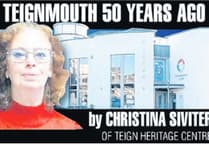DEVON County Council and Teignbridge District Council between them have planted well over 2,500 trees in their areas over the last two years.
This is one of the good news stories. But we need a lot more, as we don’t really know how many old trees have died or been cut down for housing.
Maybe it’s time to have a real logbook set up and list trees planted, and trees taken down so that we get a true net increase or decrease.
Tree planting is one of the cheapest and easiest way to take carbon out of the atmosphere. It also has a great benefit to soil drainage; flood reducing, and biodiversity of all kinds.
Although large scale planting is the only way to make a big difference in carbon capture, you can still help if you have a garden or own a field somewhere. Here are some guidelines for planting trees in your own garden:
If you have a small garden do not plant trees as they can be problematic, better to plant shrubs.
Although they won’t capture much carbon, they will help with other things, and they look good.
If you have a garden over 80 feet long, and 80 feet from the next house, you could try some small varieties of trees; ones that do not grow more than 30 feet.
For landowners who could plant a tree or two over 120 feet from their building and just as important, from any neighbouring building, could go for a bigger tree.
Be very careful to think of how far some trees can grow outwards, like cedars; which used to be popular until they took over half the garden and cost a fortune to cut down.
Other trees to avoid planting even in medium size gardens are the dreaded Leylandii and similar trees.
They don’t add much to anything in a back garden, can’t be trimmed without die back and just makes you an enemy with your neighbours.
Finally, don’t forget to water new trees for up to a year in dry times, or you could lose them.



Comments
This article has no comments yet. Be the first to leave a comment.